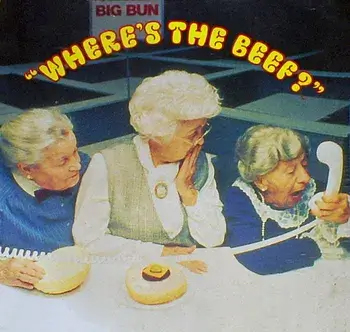This article first appeared on Inside Higher Ed’s “Call To Action” blog two days before the Super Bowl.
This Sunday—despite near-historic levels of political unrest and national anxiety—over 100 million Americans will still gather around the old flat screen, nacho to nacho, and collectively engage in one of our most hallowed, patriotic pastimes: impetuously arguing over which Super Bowl commercials are pretty darn good and which ones …definitely aren’t.
According to the National Retail Federation, 24 percent of Super Bowl viewers say the commercials are the most important part of the entire game experience. A couple years ago, Dish Network even tricked out their DVR service so customers could skip the game entirely and only watch the ads.
Needless to say, with such a huge audience so freely offering up their undivided and enthusiastic attention, big brands come out guns blazing. This year, they’ll pony up about $5 million per 30-second spot. (Bear in mind, that that’s just the media buy and doesn’t include agency or production fees, which can be exorbitant.)
Desperate to capitalize on their big investments, brands have recently started to spend even more on the marketing of their Super Bowl spots. Yup, you read that right—brands are marketing their marketing. This entails, at a bare minimum, strategically timed press events leading up to the ad’s debut and coordinated social and digital efforts aimed at generating as much buzz as possible. This year, Budweiser even rolled out a 15-second teaser (you know, like major studios do for big-budget theatrical releases) for its minute-long Super Bowl ad (which has also already been released).
What does any of this have to do with higher ed marketing?
You’ll probably never run a national TV spot, let alone during the Super Bowl. Your institution is probably tuition dependent, and your budget is probably miniscule, especially in comparison to the companies mentioned above. In reality, you’re nothing at all like them.
And to you, I simply say…exactly! You’re not like them. But there are a few things you can learn, especially from their mistakes.
Case in point: One of my all-time favorite marketing anecdotes concerns a very famous Nissan ad that debuted in 1996. (Go ahead and watch it now if you’re not familiar with it.) Titled, simply, “Toys,” it’s now widely regarded as one of the best television commercials ever made. It won every major advertising award in existence, and even got its creative director invited to the Oprah Winfrey Show. Nissan reportedly spent over a million dollars just to produce the ad, and then followed up with an estimated $200 million dollar media blitz promoting the campaign everywhere they could.
By all early indicators, the ad was a resounding success. It got people talking about the Nissan brand, and, in fact, just a few months after the campaign launched, Nissan had even sold 25,000 t-shirts featuring the ad’s characters. There were even—no kidding—talks about turning it in to a TV show. Touchdown, right?
Not exactly. Despite the ad generating a tremendous response, sales of Nissan cars declined in the months following the ad’s debut. Nissan dealers (the business owners responsible for actually selling the cars—think of them as the admissions counselors of the auto industry) were frustrated that the new campaign featured a car (a toy car, at that) that was slated to be discontinued and didn’t highlight any of the actual features of the car or talk about cost—things the dealers knew customers cared about most.
In the end, Nissan had to offer robust incentives and discounts to make up for the downturn in sales (seeing the higher ed relevance yet?). In retrospect, it’s a fascinating case study: everyone involved had done their jobs exceedingly well, and yet it all fell apart pretty spectacularly, culminating with the departure of Nissan’s USA president and CEO.
So, what are the takeaways for higher ed marketers?
For starters, remember that good marketing is about good process. Despite the truly remarkable quality of some of the ads you’ll see this weekend, they’re all just discrete parts of a much bigger whole. Before it’s all said and done, pieces of these ads will end up as billboards and print ads and as YouTube pre-roll. They’ll be cut down into 15-second Instagram spots and get deployed aggressively and intentionally for months and months. So, acquire the best marketing assets you can afford, but be sure to have a plan for how you’ll operationalize them (e.g., don’t blow your budget on a cool video that will sit on your YouTube channel with 37 lifetime views).
Second, it’s imperative that you get on the same page as your sales force (your admissions team and development officers) to ensure your efforts are aligned and that you’re generating activity they can actually act on. What will help them the most? What kind of collateral do they think is most effective?
Finally, remember the bottom line. Many colleges and universities in this country need to enroll more students—in fact, 84 percent of them reported being very or moderately concerned about meeting their enrollment goals, according to Inside Higher Ed’s recent survey of admissions directors. Given your limited resources, make sure they’re all dedicated to meeting your most pressing needs—generating revenue in the form of tuition and donations.
Whatever you do, don’t leave your colleagues across campus wondering, “Where’s the beef?” That’ll get old real fast.
Joel Anderson is Waybetter’s VP of Marketing & Strategy. Higher ed is all he knows.
